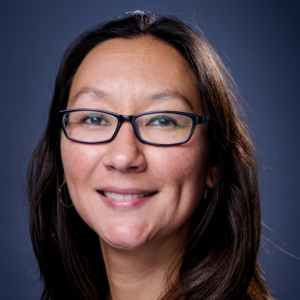Experienced boaters know how to handle a storm at sea: They steer straight into it while maintaining enough power to avoid being tossed around by waves and wind. It may sound counter-intuitive, but by confronting the bad weather directly they improve their chances of seeing better days ahead.
In the turbulent waters of the clinical research workforce, with high turnover and burnout circling like relentless sharks, several leading organizations have found ways to navigate their way through and around the worst of the storm.
Located in the heart of the Research Triangle Park (RTP) region of North Carolina, Durham Technical Community College (Durham Tech) is part of an area with a concentration of contract research organizations (CROs) and a chronic workforce shortage going back to the 1990s, says Sharleen Traynor, PhD, MPH, an instructor/fieldwork coordinator for the Clinical Trials Research Associate program at the college.
The challenge demanded a new way of assessing the problem. “It required us to look at student frustrations in finding jobs in clinical research,” Traynor says. “We have to help them overcome the obstacles” to learning about and finding jobs in the vocation, she adds.
Launched in 1998, Durham Tech’s Clinical Trials Research Associate curriculum prepares individuals to assist physicians and clinical researchers in the initiation, administration, coordination, and management of clinical research studies for the development of new drugs, clinical products, and treatment regimens. Course work includes in-depth study of drug development, federal regulations, and clinical research processes. Supervised fieldwork provides skill application in subject recruitment, regulatory compliance, accountability for drugs/devices, and documentation of subject involvement in clinical research studies. Graduates may be eligible to sit for national certification examinations. Research employment opportunities may include medical centers, hospitals, pharmaceutical industries, clinics, research facilities, biotechnology or device companies, and physicians’ offices.
Students from Durham Tech and Wake Tech can take advantage of shared resources and opportunities offered by a new collaboration called RTP Bio.
Traynor believes those already in the clinical trial industry must take a more proactive approach to locating and hiring new talent. “It takes a lot of advocacy and bending the ear of the right people,” she says.
The clinical trial industry doesn’t exactly make it easy for new talent to join, Traynor laments. Job postings and titles are often unclear and inconsistent, for example, plus she’s not a fan of time-based requirements. “I’d like to see minimum qualifications be based on skills and not [on arbitrary factors] like two years of experience or a bachelor’s degree,” she says.
There’s a “disconnect” between some hiring managers in human resources offices and those who are seeking new talent at CROs or elsewhere, Traynor says. “There are more job opportunities now, but we’ve still got a long way to go,” she adds.
For Karri Venn, RD, CCRC, chief operating officer/president at Centricity Research, the secret weapon for CROs is promoting research as a career opportunity. “You should always be looking at resumes and training your managers to ask the right questions during interviews,” she says.
It begins with clear job descriptions and training hiring managers to ask the right questions. “Applicants have to understand the expectations” or there could be pain down the line for both sides, Venn says. She’s found that it’s often a lack of clarity fueling employee frustrations. Centricity promotes standardized training, team programs, and multiple shadowing opportunities whereby experienced employees help newer colleagues navigate and learn their responsibilities.
Proud that it avoided any layoffs during the COVID-19 downturn, Dr. Samir Arora, chief growth director and the principal trial investigator for its Columbus, Ohio location (formerly Aventiv Research), says his organization also used the pandemic to take a hard look at its own employee retention approach. “It made us take a more proactive approach, with an emphasis on lots of communication, transparency about company goals, [and] weekly town hall meetings,” and otherwise deepening the bond between employees and the organization, he notes.
The retention efforts have cut turnover almost in half, Arora reports—from 30% a few years ago to around 20% in 2020, and now “in the teens,” he says. It’s not always easy, and it takes energy and focus to retain your best employees, he notes, but it’s worth the effort to avoid the pain of turnover.
Arora and team have also redoubled efforts to reach out to potential new employees via local colleges. “Other than bench research, many students still don’t know much about clinical trials as a career option,” he says. “We want to show them the options” that exist in the clinical trial industry, he adds.
They’ve also developed a structured program for new hires to help them develop a career path, whether concentrated on regulatory, data management, or other aspects of clinical trial work. But the foundation for much of their effort is built on inspiring pride.
“People want purpose,” Arora says. “We talk about the drugs we’ve helped get approved, and how they’ve helped people,” he explains, noting that promoting a culture of pride and caring helps with retention efforts.
Author: Michael Causey



